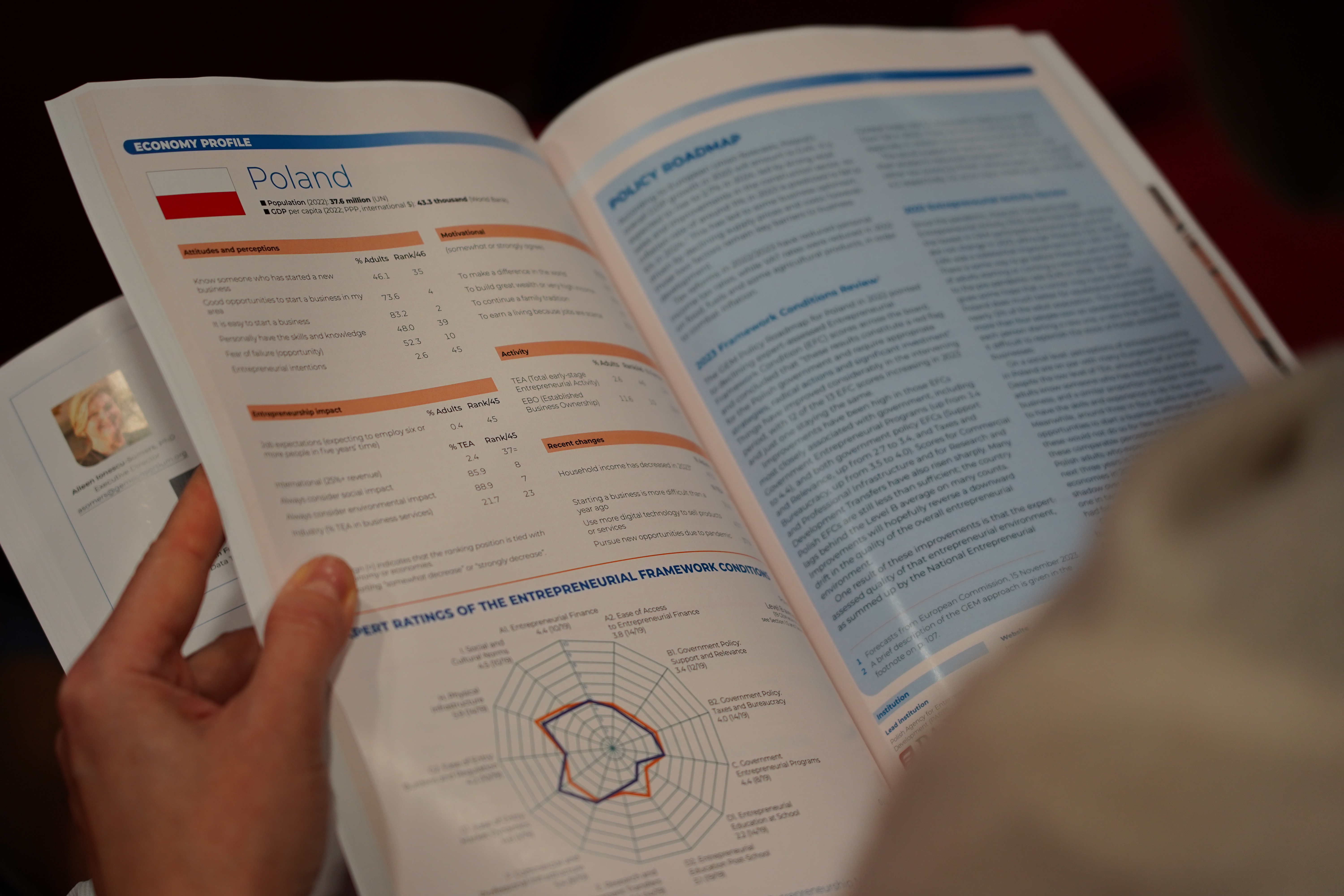GEM Global Reports, National Reports and Special Topic Reports are leveraged by policymakers, academic researchers, decision-makers at international organizations, entrepreneurs, journalists and other entities concerned about the entrepreneurship ecosystem in their country or region. Creating such reports involves a rigorous process.
Donna Kelley from the GEM USA and Saudi Arabia Teams has co-authored a remarkable 40 reports! (See related feature story). Kelley shared the below 10 keys to successfully authoring a GEM report. These insights can be leveraged by GEM research colleagues around the world. For those considering being part of GEM, these tips will give you a flavor for the process.
- Following an example is helpful when you’re new to GEM reports. My first report was the Republic of Korea National Report. I followed the format of the Global Report that year.
- Be selective in what you highlight. A GEM report should not be an exhaustive rundown of every possible analysis. Think how each piece contributes to the story you are communicating.
- Stay focused on GEM. In a few cases, we considered integrating other data sources, but soon realized it gets unwieldy and takes the attention off GEM. Of course, Special Reports, like the ones we co-authored with the World Economic Forum, can be achieved with a specific focus and using a narrow set of GEM indicators.
- If you have several authors, and especially if they are working on different chapters, one co-author with deep knowledge of GEM should review the entire report. It’s easy to misinterpret a finding, especially if some authors aren’t consistently working with GEM data or have less familiarity with the research (at the same time, they can still be bringing different valuable perspectives).
- Don’t data dump in the text! Try this: read one paragraph that lists a bunch of GEM stats and think from the perspective of someone not familiar with GEM. Your eyes may soon glaze over. Instead, add numbers to the charts and use terms like “slightly higher” or “substantially lower” rather than actual numbers. You can also talk about differences in fractions, when possible (one-third higher, one-fourth lower). Also, audiences especially like to know how the numbers differ from prior years, which by the way, is a great argument for continuity in GEM for a National Team.
- Don’t overinterpret. You can offer some possible explanations and it’s especially valuable to tie a finding back to another one (for example, a drop in Total Early-Stage Entrepreneurship – TEA – might be linked to an increase in fear of failure and fewer seeing opportunities). Be cautious where you don’t have evidence or data of a cause and effect. Don’t use “significant” if something isn’t statistically significant (wise advice from our GEM colleague Jonathan Levie).
- Overall, there can be lots of findings in these reports. It can be challenging for the audience to get their arms around all the information. Chapter summaries are helpful in splitting up findings into smaller parts.
- Conclusions can help identify areas for further thought and focus by your audience, but be careful about going too far in interpreting the findings, unless you have the expertise, or access to expertise to make specific policy or other recommendations. Consider your readers as partners in supporting and enhancing entrepreneurship nationally and worldwide; we hope they can employ these findings in however they support and promote entrepreneurship.
- Identify a few key findings that are unusual in the report for your marketing/PR team, and review and highlight the Executive Summary before talking to the media. They will often single out a few areas they are particularly interested in and will want to focus on those, so preparation is helpful.
- Where possible, get a capable manager for the publishing process. My colleague Marcia Cole made my job so much easier. She pushed authors and got the job done in time. After reports are written, they need to be copyedited before going into production, and then proofread—these are the two main times the authors are involved in this process. Your time is valuable so you shouldn’t be reading multiple versions during the production process. Also, get a reliable copyeditor and trust their judgment.
Not part of GEM? Interested in applying these insights and contributing to global entrepreneurship research? Join GEM! Contact info@gemconsortium.org to learn more about forming a team in your country.

